Compote Dish, Queen Anne's County
From the USS Maryland Silver Service
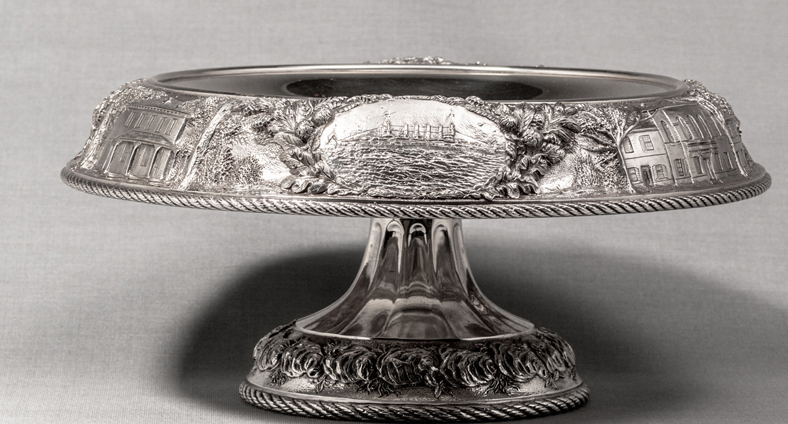
Maker: Samuel Kirk & Sons (1815-1979)
Object: Compote Dish, Queen Anne’s County
Date: 1906
Medium: Sterling Silver
Dimensions: Overall height, 4 1/2"; Overall diameter, 10 1/8"; Diameter of base, 5"
Accession number: MSA SC 1545-0927-3
The USS Maryland silver service includes a total of four compote dishes representing Caroline, Dorchester, Queen Anne’s, and Worcester Counties on the Eastern Shore. While the four scenes on each piece are unique to that particular county, the overall appearance of each compote is identical. The Great Seal and the cruiser are each surrounded by sprays of oak, chestnut, sassafras and linden. Oyster shells around the base connect the pieces to the Eastern Shore, and the rope borders symbolize the nautical theme of the service.
Queen Anne's County was created in 1706, and named after Queen Anne (1665-1714), who ruled Great Britain and Ireland from 1702 to 1714. It includes Kent Island and extends across the Eastern Shore between the Chester River on the north and Talbot County on the south. The eastern boundary of Queen Anne's County remained in dispute until the decision by the English Chancellor in 1750, which separated Delaware and Maryland. The final change to Queen Anne's County boundaries was made in 1773, when a portion of its eastern lands was assigned to the new Caroline County
1. Blakeford (number 159)
The historic mansion "Blakeford" was built between 1834-35, renovated in 1935, and tragically lost to a fire in 1970.
One of the most prominent families to live at Blakeford was the Wright family. Judge Solomon Wright represented Queen Anne’s County at the Maryland Convention and was one of the earliest judges on the Maryland Court of Appeals, from 1778–92.
His son, Robert Wright (1752-1826), also lived in the home. He served in both the Maryland House of Delegates and Senate, in addition to serving as Maryland's 13th governor from 1806-09. Wright was also a member of the U.S. Senate and the House of Representatives.
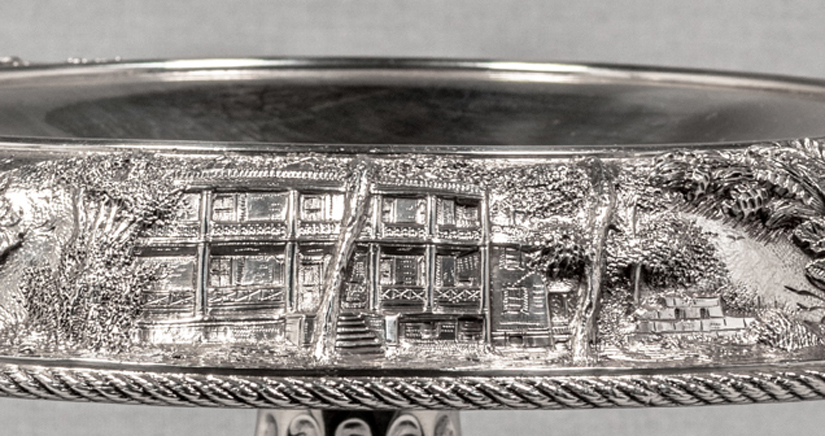
3. Wye Hall (number 156)
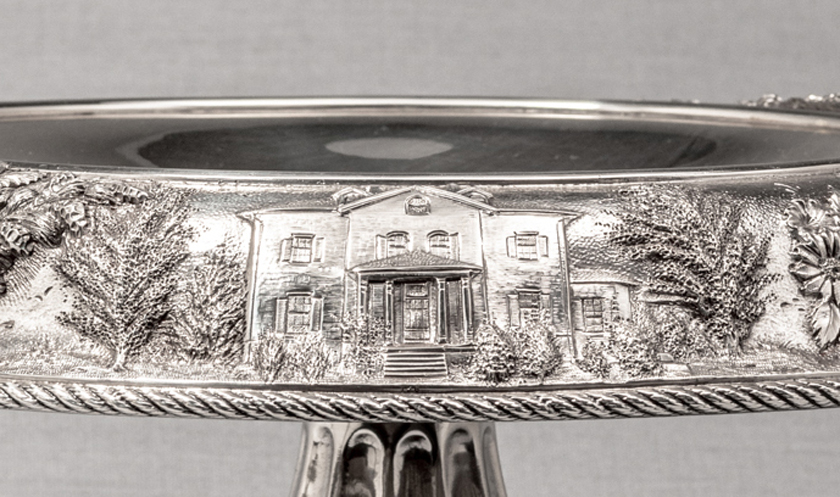
Scenes across the bottom (right to left)
1. Clover Fields (number 157)
The brick mansion depicted on this compote dish was built in 1703-05 by Philemon Hemsley (1670-1719), who was a first-generation Marylander and successful planter. One of the largest houses at its time, approximately 300,000 bricks were manufactured on site by skilled enslaved and indentured workers. Philemon's grandson, William Hemsley (1736-1812) expanded the home and was also an important political leader, serving in the Maryland Senate and representing Maryland in the Continental Congress in 1782-83.
The home is still standing today, and the Cloverfields Preservation Foundation is working on restoring the property.
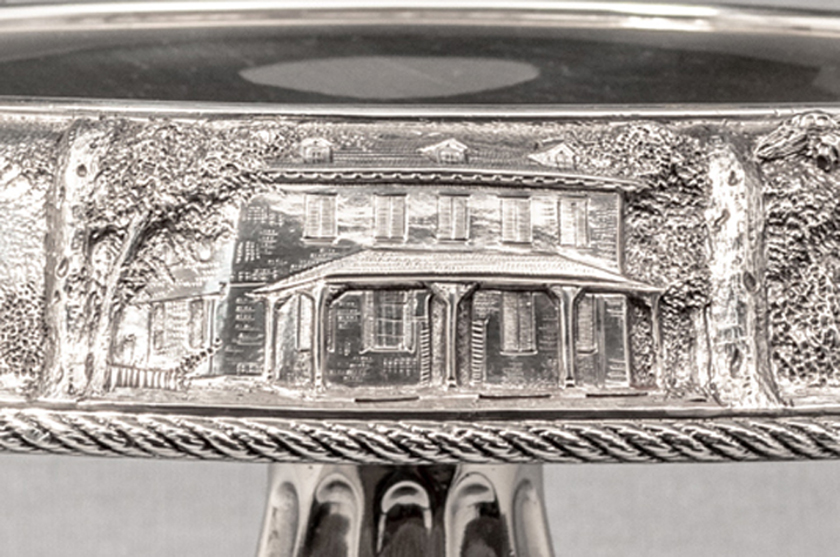
2. USS Maryland Cruiser
3. Courthouse at Centreville, 1791 (number 158)
The courthouse was the oldest courthouse in continuous use in the State of Maryland until the new Circuit Court for Queen Anne’s County opened in 2019.
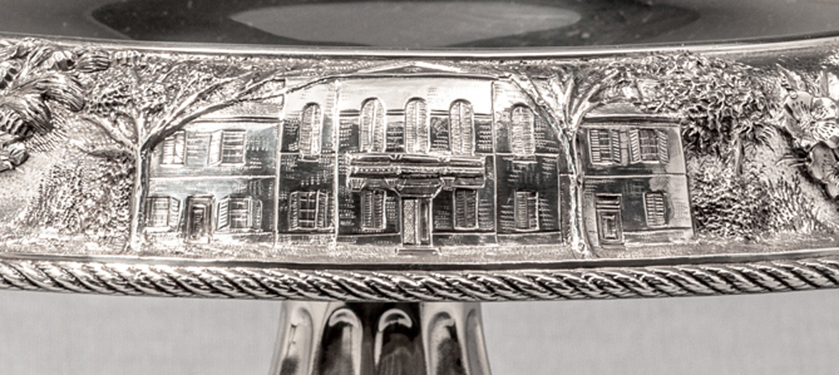
|
This web site is presented for reference purposes under the doctrine of fair use. When this material is used, in whole or in part, proper citation and credit must be attributed to the Maryland State Archives. PLEASE NOTE: The site may contain material from other sources which may be under copyright. Rights assessment, and full originating source citation, is the responsibility of the user. |
© Copyright August 07, 2024 Maryland State Archives
